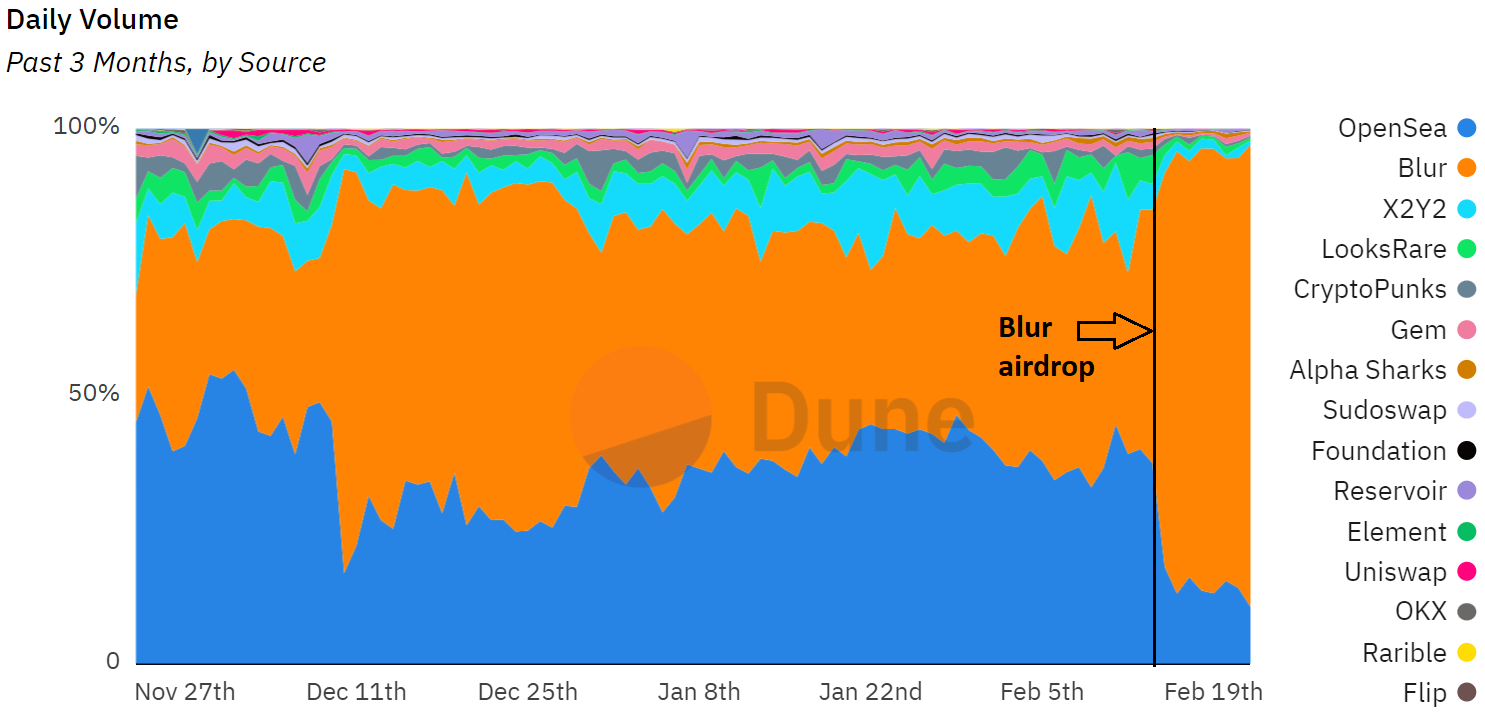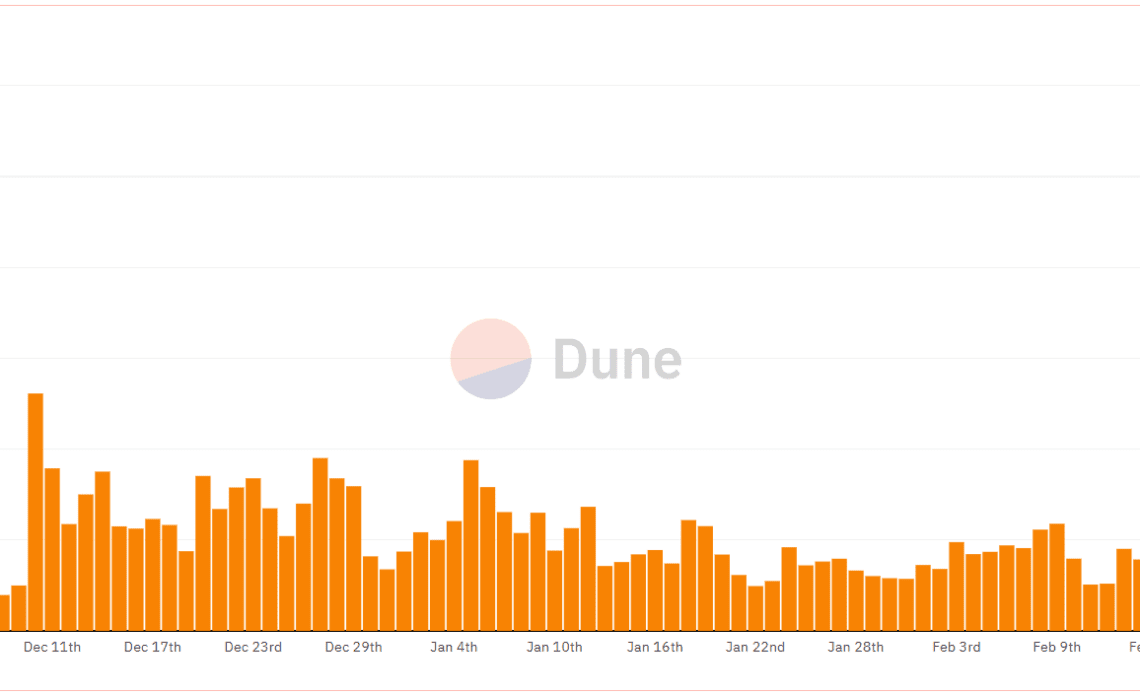Blur, a NFT marketplace, has seen its trading volumes and total sell-side liquidity skyrocket since conducting an airdrop on Feb. 14, 2023. The reason for the spike could be the start of season 2 airdrops, where 10% of BLUR token’s total supply will be distributed to certain users based on their activity. The team allocated 12% toward an early user airdrop in the first season that ran from the marketplace’s gated launch in March 2022 to February 2023.
Blur has made a significant dent in OpenSea’s position as the leading marketplace. Analytics from data scientist Hildobby shows that Blur is eating into the market share of OpenSea and other aggregators like X2Y2. Blur’s incentive program and advanced NFT trading features are causing users to shift from OpenSea to Blur.

OpenSea feels the heat
Following Blur’s example, OpenSea discontinued its marketplace fee of 2.5% per sale. The fact that OpenSea LLC was willing to let go a significant chunk of its earnings—close to around $336.8 million for one year—suggests that Blur’s growth threatens it.
The two NFT giants also recently locked horns on the critical issue recently of creator royalties. By restricting the ability to earn full creator royalties on both platforms, creators have to choose between Blur and OpenSea to list collections.
Pacman, the founder of Blur, told Cointelegraph on Feb. 23 that OpenSea started the spat first. They were forced to retaliate with restrictive features like limited royalties on Blur if a collection is also listed on OpenSea as well. However, ideally, he would want both creators to be able to earn their royalties on both platforms without having to choose. It appears that Pacman wants OpenSea to succumb to the competition and instead of fighting Blur, it should accommodate the aggregator progressively.
Blur has also incentivized creators and users through the Blur token. It was also a way to compensate for the earnings creators would have made in missed royalties on the platform when it didn’t support them earlier. NFT traders, on the other hand, receive token rewards for adding liquidity to the platform by listing NFTs. So far, the plan has worked successfully, as Blur’s liquidity has skyrocketed after the token launch.
Blur has also earned the reputation of a “marketplace for pro traders” thanks to its innovative features for experienced NFT traders…
Click Here to Read the Full Original Article at Cointelegraph.com News…
